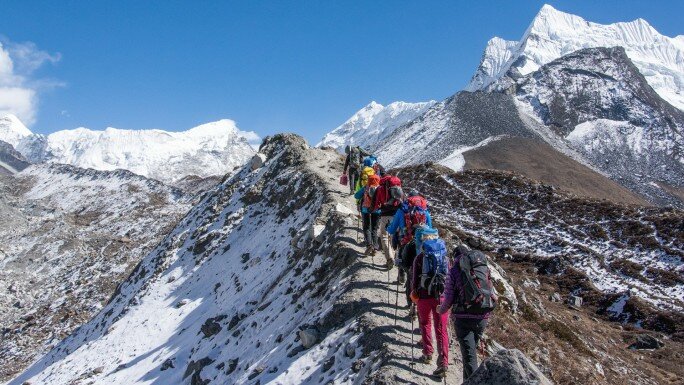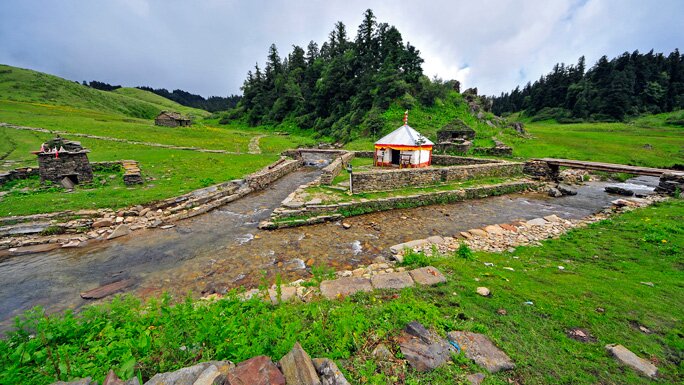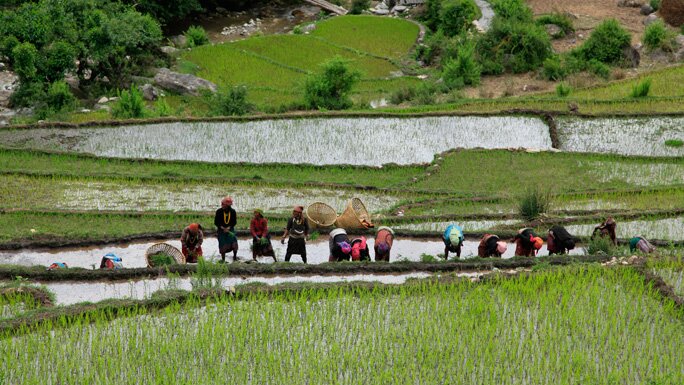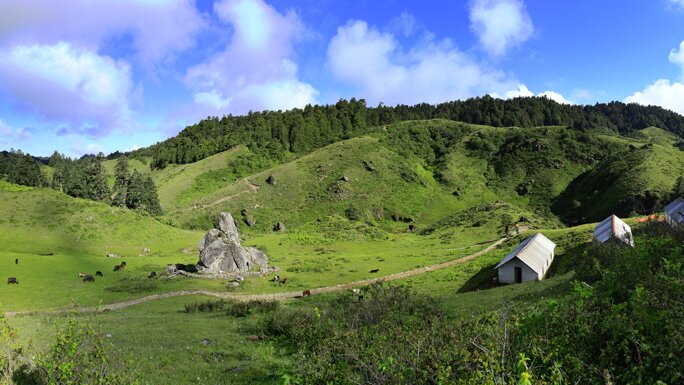
Discover NepalThe official tourism website for Nepal
For trade and industry activities visit our corporate website 
Discover NepalThe official tourism website for Nepal
For trade and industry activities visit our corporate website 
Trek through the rolling hills of the Khaptad National Park (about 3,000 m) through subtropical forest of Chir pine at lower altitude, and sub alpine forests of fir, hemlock, oak and rhododendron in the higher areas. The area boasts of 224 species of medicinal herbs and is described as the living garden of herbs and a museum of natural history. It is estimated that about 567 species, 11 percent of flowering plants of Nepal, are found in Khaptad.
The park also offers excellent bird-watching opportunities, with 270 species of birds, the common ones being different varieties of Impheyan pheasant, partridges, flycatchers, bulbuls, cuckoos and eagles. Khaptad Park is also fairly rich in its variety of wild animals, common ones being barking deer, wild dog, wild boar, ghoral, Himalayan black bear, yellow-throated marten, rhesus monkey and langur monkey.

Other areas in the national park of interest to tourists are Khaptad Daha, Nag Dhunga and Upper Tribeni. Khaptad National Park also offers religious sightseeing.
The Ashram (hermitage) of Khaptad Baba as the name proclaims is the area where the famous Khaptad Baba (Late Swami Sachchidananda) resided. The Ashram located at Tribeni is an important destination for pilgrims and tourists to Khaptad. The meditation area includes temples of lower Tribeni. There are no entrance restrictions for visitors. In the core zone, however, grazing animals, cutting firewood and activities like drinking alcohol, smoking, slaughtering animals are prohibited.
Saileswori is one of the most famous religious stops on the way to Khaptad from Attariya Chowk, Kailali. The temple of Goddess Saileswori in Sigarhi, Doti, comprises temples of Ganesh and Masto. Silgarhi Bazaar, which is a historical town is the main business center of far west Nepal.

Ramaroshan lies in Achham district. It is also called Pancha Pura (five cities) in Hindu scriptures and is attached to the stories of Pauranic Age. The site is famous for the five historical cities connected to stories of Goddess Parvati. In addition are 12 lakes that are good birdwatching sites. There are also remains of old historical buildings that make this region important from archeological point of view.
Badimallika houses the temple of Mallika Devi (4,153 m) in Bajura district. It is believed that Goddess Sati, Shiva's consort, was reborn as Parvati in this holy area. From this place, one can observe the enchanting views of the Himalayas. The month of April - October are ideal months to visit Badimallika. One can reach this place from Khaptad National Park within 8 to 10-day trek.

Surma Sarovar (4,307 m) is a holy and beautiful lake site in the district of Bajhang. A temple dedicated to Surma Devi is situated near the lake. Hindus believe that Surma Devi is the incarnation of Goddess Kali. Mt. Kailash in Tibet believed to be the abode of Lord Shiva can be seen from Surma Sarovar. Surma Sarovar is 3-day trek from Khaptad National Park.
Khaptad National Park is in Seti zone and is surrounded by districts Doti, Bajura, Bajhang and Achham.
The gateway to Khaptad is Silgarhi Bazaar in Doti district, from where the park headquarters is 50 km and almost 2-day trek away. The best way to reach Silgarhi is via Attariya Chowk in Kalali district. Silgarhi Bazaar is 9-hour drive from Attariya Chowk. Buses to Attariya Chowki, Kailali, are available at Central Bus Station, Gongabu, in Kathmandu and transportation to Silgarhi is available at Attariya Chowk. Another option is to take a flight to Dhangadi from where one can drive to Silgarhi Bazaar.

Khaptad National Park can also be reached easily from the west entry point of Nepal at Gadda Chowki, Mahendranagar. Silgarhi Bazaar is approximately 10-hour drive from Mahendranagar, while Mahendranagar is 30-minute drive from the Indian border town of Banbasa, from where buses depart to Delhi every hour of the day.
Nepal through the eyes of our visitors





